Results
| Choice | Votes | % |
|---|---|---|
| | 101,936 | 65.3 |
| Instant-runoff voting (single-member electorates) | 54,165 | 34.7 |
| Valid votes | 156,101 | 94.4 |
| Informal | 9,203 | 5.6 |
| Total votes | 165,304 | 100.00 |
| Registered voters/turnout | 184,405 | 89.6 |
| Source: Elections ACT | ||
A referendum on an electoral system for the Australian Capital Territory Legislative Assembly took place on 15 February 1992, alongside elections to the Legislative Assembly. Voters were asked to choose between the instant-runoff voting in seventeen single-member electorates, and the single transferable vote in three multi-member electorates: two electing five members, and one electing seven. By a comfortable margin, voters chose the single transferable vote.
| Choice | Votes | % |
|---|---|---|
| | 101,936 | 65.3 |
| Instant-runoff voting (single-member electorates) | 54,165 | 34.7 |
| Valid votes | 156,101 | 94.4 |
| Informal | 9,203 | 5.6 |
| Total votes | 165,304 | 100.00 |
| Registered voters/turnout | 184,405 | 89.6 |
| Source: Elections ACT | ||

Proportional representation (PR) refers to a type of electoral system under which subgroups of an electorate are reflected proportionately in the elected body. The concept applies mainly to political divisions among voters. The essence of such systems is that all votes cast – or almost all votes cast – contribute to the result and are effectively used to help elect someone – not just a bare plurality, or (exclusively) the majority – and that the system produces mixed, balanced representation reflecting how votes are cast.
Single non-transferable vote or SNTV is an electoral system used to elect multiple winners. It is a generalization of first-past-the-post, applied to multi-member districts with each voter casting just one vote. Unlike FPTP, which is a single-winner system, in SNTV multiple winners are elected, typically in electoral districts; additionally, unlike FPTP, SNTV produces mixed representation and makes it unlikely for a single party to take all the seats in a city or a province, which can happen under FPTP.

First-past-the-post voting is an electoral system wherein voters cast a vote for a single candidate, and the candidate with the most votes wins the election. Analogous systems for multi-winner contests are known as plurality block voting or "block voting" systems; both FPTP and block voting are "plurality" systems in that the winner needs only a plurality of the votes and not an absolute majority. The term first-past-the-post is a metaphor from horse racing of the plurality-voted candidate winning such a race; the electoral system is formally called single-member plurality voting (SMP) when used in single-member districts, and informally called choose-one voting in contrast to ranked voting or score voting.
Electoral systems of the Australian states and territories are broadly similar to the electoral system used in federal elections in Australia.

The New South Wales Legislative Council, often referred to as the upper house, is one of the two chambers of the parliament of the Australian state of New South Wales. The other is the Legislative Assembly. Both sit at Parliament House in the state capital, Sydney. It is normal for legislation to be first deliberated on and passed by the Legislative Assembly before being considered by the Legislative Council, which acts in the main as a house of review.

The Victorian Legislative Council (VLC) is the upper house of the bicameral Parliament of Victoria, Australia, the lower house being the Legislative Assembly. Both houses sit at Parliament House in Spring Street, Melbourne. The Legislative Council serves as a house of review, in a similar fashion to its federal counterpart, the Australian Senate. Although, it is possible for legislation to be first introduced in the Council, most bills receive their first hearing in the Legislative Assembly.
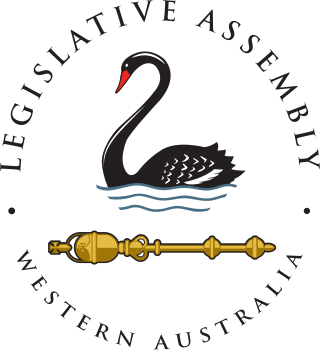
The Western Australian Legislative Assembly, or lower house, is one of the two chambers of the Parliament of Western Australia, an Australian state. The Parliament sits in Parliament House in the Western Australian capital, Perth.

The House of Assembly, or Lower House, is one of the two chambers of the Parliament of Tasmania in Australia. The other is the Legislative Council or Upper House. It sits in Parliament House in the state capital, Hobart.
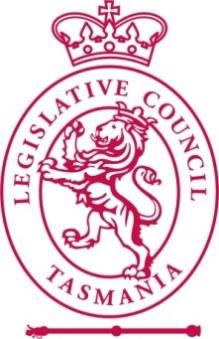
The Tasmanian Legislative Council is the upper house of the Parliament of Tasmania in Australia. It is one of the two chambers of the Parliament, the other being the House of Assembly. Both houses sit in Parliament House in the state capital, Hobart. Members of the Legislative Council are often referred to as MLCs.
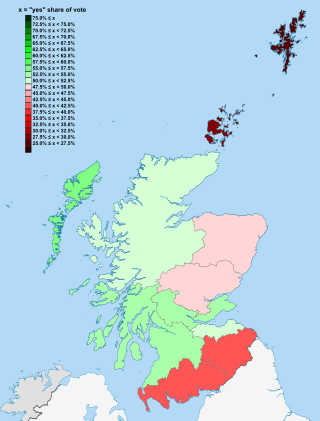
A post-legislative referendum was held in Scotland in 1979 to decide whether there was a sufficient support for a Scottish Assembly proposed in the Scotland Act 1978 among the Scottish electorate. This was an act to create a devolved deliberative assembly for Scotland. A majority (51.6%) of voters supported the proposal, but an amendment to the Act stipulated that it would be repealed if less than 40% of the total electorate voted in favour. As there was a turnout of 64% the "Yes" vote represented only 32.9% of the registered electorate, and the act was subsequently repealed.
An electoral district, also known as an election district, legislative district, voting district, constituency, riding, ward, division, or (election) precinct is a subdivision of a larger state created to provide its population with representation in the larger state's legislative body. That body, or the state's constitution or a body established for that purpose, determines each district's boundaries and whether each will be represented by a single member or multiple members. Generally, only voters (constituents) who reside within the district are permitted to vote in an election held there. District representatives may be elected by a first-past-the-post system, a proportional representative system, or another voting method. They may be selected by a direct election under universal suffrage, an indirect election, or another form of suffrage.

The Parliament of South Australia is the bicameral legislature of the Australian state of South Australia. It consists of the 47-seat House of Assembly and the 22-seat Legislative Council. General elections are held every 4 years, with all of the lower house and half of the upper house filled at each election. It follows a Westminster system of parliamentary government with the executive branch required to both sit in parliament and hold the confidence of the House of Assembly. The parliament is based at Parliament House on North Terrace in the state capital of Adelaide.
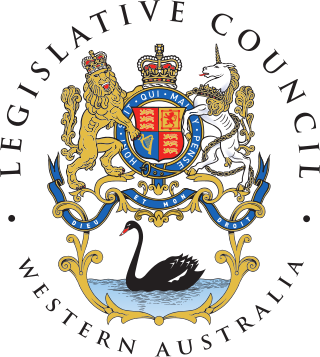
The Western Australian Legislative Council is the upper house of the Parliament of Western Australia, a state of Australia. It is regarded as a house of review for legislation passed by the Legislative Assembly, the lower house. The two Houses of Parliament sit in Parliament House in the state capital, Perth.

The Legislative Assembly of Queensland is the sole chamber of the unicameral Parliament of Queensland established under the Constitution of Queensland. Elections are held every four years and are done by full preferential voting. The Assembly has 93 members, who have used the letters MP after their names since 2000.
A group voting ticket (GVT) is a shortcut for voters in a preferential voting system, where a voter can indicate support for a list of candidates instead of marking preferences for individual candidates. For multi-member electoral divisions with single transferable voting, a group or party registers a GVT before an election with the electoral commission. When a voter selects a group or party "above the line" on a ballot paper, their vote is distributed according to the registered GVT for that group.
BC-STV is the proposed voting system recommended by the Citizens' Assembly on Electoral Reform in October 2004 for use in British Columbia, and belongs to the single transferable vote family of voting systems. BC-STV was supported by a majority of the voters in a referendum held in 2005 but the government had legislated that it would not be bound by any vote lower than 60 percent in favour. Because of the strong majority support for BC-STV, the government elected to stage a second referendum in 2009, but with increased public funding for information campaigns to better inform the electorate about the differences between the existing and proposed systems. The leadership of both the "yes" side and the "no" side were assigned by the government. The proposal was rejected with 60.9 percent voting against, vs. 39.1 percent in favour, in the 2009 vote.
The Edmonton provincial electoral district also known as Edmonton City from 1905 to 1909, was a provincial electoral district in Alberta, Canada mandated to return members to the Legislative Assembly of Alberta from 1905 to 1917 and again from 1921 to 1959.
Electoral districts go by different names depending on the country and the office being elected.

The 1927 New South Wales state election to elect the 90 members of the 28th Legislative Assembly was held on 8 October 1927. During the previous parliament the voting system, which had been a form of proportional representation with multi-member seats and a single transferable vote, was changed to single member constituencies with optional preferential voting. Severe divisions occurred within the Labor Party caucus in the four months prior to the election and a caretaker government composed of the supporters of the Premier of New South Wales and party leader, Jack Lang was in power at the time of the election.
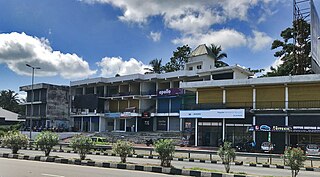
Alathur State assembly constituency is one of the 140 state legislative assembly constituencies in Kerala state in southern India. It is also one of the 7 state legislative assembly constituencies included in the Alathur Lok Sabha constituency. As of the 2021 assembly elections, the current MLA is K. D. Prasenan of CPI(M).